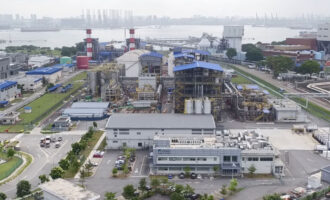Flightpath initiative proposes streamlining approval process for synthetic aviation fuel
By Alison Gaines
Alexander Zschocke, chairman of the European Union’s Flightpath 2020 initiative, warned of the implications of having different philosophies for aviation certification and chemical registration. At the December 2015 meeting of ASTM Subcommittee D02.J on aviation fuels in Austin, Texas, he proposed a way of solving this issue. Zschocke, who was presenting on behalf of the initiative, is senior manager for aviation biofuel at Lufthansa, based in Frankfurt, Germany.
Unfortunately, there was very limited discussion of his proposal due to time constraints. As background, all aviation fuels have to meet very strict quality specifications. Main jet fuels used in the aviation sector are those meeting ASTM D1655 “Jet A” and “Jet A-1” specifications and the UK DEF 91-91 standard. Currently, aircraft can use only those fuels that they have been certified to use. Use of any other fuel would require re-certification of the aircraft. That means that any biofuel or biofuel blend has to be formally qualified as being identical to the fuel the aircraft are certified to use. This requires extensive testing to verify that the fuel is equivalent to ASTM D1655 jet fuel.
For aviation, the relevant aspect is that a blend meets the properties of the ASTM specification. ASTM D7566, Specification for Aviation Turbine Fuel Containing Synthesized Hydrocarbons, was developed to specify jet fuels produced from material other than crude oil. Once a fuel has been produced and blended according to ASTM D7566, the blend by definition becomes ASTM D1655 kerosene. It then enters the normal infrastructure for kerosene, and no longer has to be traceable or identifiable.
This is quite different from the approach used by the European Chemicals Agency (ECHA), with whom all chemical substances produced in or imported into the European Union have to be registered. In case of blends of two or more substances, the relevant aspect is not the property of the blend. All individual substances of the blend need to be ECHA-registered, Zschocke explained. This would apply to synthetic fuels that are blended with Jet A and Jet A-1.
 The current EU definition of aviation kerosene only acknowledges kerosene derived from crude oil sources. Therefore, any bio kerosene needs a completely separate registration, which is time-consuming and costly. This effort is an additional cost to the supplier, independent of ASTM certification. So far, only Finland’s Neste Oil, which manufactures Hydroprocessed Esters and Fatty Acids (HEFA) jet fuels, has made this commitment.
The current EU definition of aviation kerosene only acknowledges kerosene derived from crude oil sources. Therefore, any bio kerosene needs a completely separate registration, which is time-consuming and costly. This effort is an additional cost to the supplier, independent of ASTM certification. So far, only Finland’s Neste Oil, which manufactures Hydroprocessed Esters and Fatty Acids (HEFA) jet fuels, has made this commitment.
In principle, every producer/importer must undertake an individual application. This is very inefficient, Zschocke explained, because the number of pathways and producers of non-petroleum-based ingredients is increasing “almost exponentially,” so this approach would involve the unnecessary duplication of work and costs.
Co-registration of chemically identical substances is allowed, subject to acceptance by the ECHA, he said. Zschocke suggested that perhaps bio kerosene producers can form a consortium for REACH registration, with the targeted definition of the registered substance to be made as inclusive as possible.
This is an issue that not only concerns the still tiny bio kerosene sector, he said. As synthetic kerosene eventually will be produced on a larger scale, distribution networks will evolve to handle both synthetic and conventional kerosene. If a producer in the U.S. sells only domestically, they will not have to register with ECHA. But cross-contamination is likely to occur in pipelines, so as a result, “non ECHA-registered blend components may physically be present in kerosene imported into Europe,” said Zschocke. This could cause the illegal importation of non-ECHA-approved products into Europe by an importer of conventional kerosene.
This disjointed system and the way that it is not harmonised between Europe and North America can create problems for the conventional kerosene market, where millions of tonnes of products are traded each year, as well.
The European Advanced Biofuels Flightpath is geared toward achieving commercialisation of biofuels in aviation, and has the specific goal of using two million tonnes of sustainable biofuels in the European Union civil aviation sector by 2020. More ease in registration for these blending components would aid greatly in making this a reality, he said.








